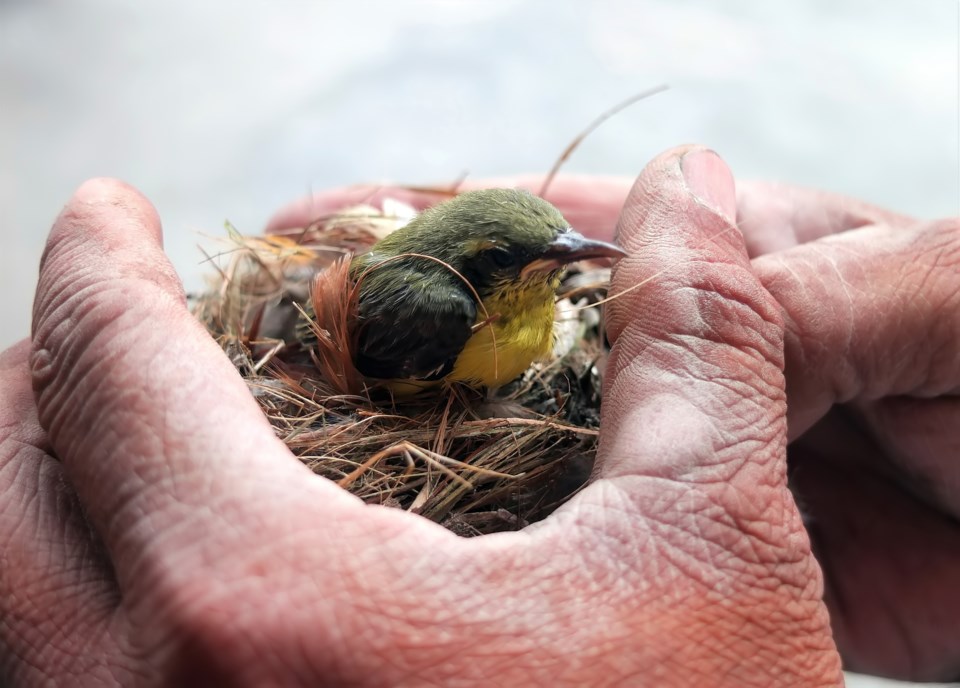NEWS RELEASE
SUSTAINABLE ORILLIA
*****************
World Migratory Bird Day is celebrated in Canada on the second Saturday of May, which is May 14 this year.
In many ways, it is a joyful time of year, marking the end of cold weather and reuniting us with old feathered friends who have wintered in the south and often have travelled astonishingly far to return.
Here in Orillia, we are fortunate to be located on a significant migration route and we have already welcomed many of our fair-weather friends back, whether ‘just passing through’ or settling into their nests for the season ahead.
There is, however, a darker side to migration. It is a perilous, stressful time for migrating birds and many do not make it. There are natural hazards such as storms, high winds and unseasonable cold snaps. And there are human hazards, such as hunters and building collisions.
Around the world, many small birds we might never consider as food are netted and eaten in the thousands. And we are all too familiar with the fall hunting season, focused on game birds and responsible for killing over five million birds each year in North America.
Building collisions kill between 300 million and one billion birds worldwide each year and it is a largely preventable source of bird deaths. In Toronto, many buildings on the migration route — especially high rises that remain lit at night — present a death trap to migrating birds. These buildings may represent progress to some, but certainly not to thousands of birds, flying in the dark and navigating by the stars.
For millennia, before human ascendancy, the only light visible to birds en route might have been a Neolithic hunter-gatherer’s fire or the gleam of moonlight on a lake. Now, as so much of our planet is aglow with light pollution, no wonder birds are confused and their navigation systems compromised.
An organization called Fatal Light Awareness Program (FLAP) has been working for the past 30 years to get lights turned off during migration seasons, with some success. Since most of these buildings are unoccupied at night, other than for cleaning staff, why are the lights on anyway?
FLAP also does ground-level rescue work during migratory periods, and in Toronto. A typical FLAP rescue operation entails patrolling downtown canyons, picking up scores of dead, injured or stunned migratory birds. FLAP tends to the injured if possible and provides a quiet place of recovery for the merely stunned. Its missions are carried out in the dark hours, just before dawn, pre-empting predators like ring-billed gulls from swooping down, eating the dead and killing the injured and stunned birds.
Despite occasional challenges from police and security services, FLAP’s work continues, as does its mission to ‘turn off the lights’ during migratory season. If you are interested in learning more about FLAP, the work it does and how you can make your house more ‘bird-safe,’ please go to flap.org. They’ll be delighted to hear from you.
Some birds are accorded a degree of protection under the Migratory Bird Treaty Act (MBTA), which makes it a crime to “pursue, hunt, take, capture or kill” a migratory bird. The definition of a migratory bird can be extended at times to include an “incidental take” — when birds are killed unintentionally (but avoidably) as a result of commercial or industrial activities.
This was the case in the $100-billion judgment against BP, which, after the 2010 Deepwater Horizon oil spill in the Gulf of Mexico, pleaded guilty to criminal charges, which included violating the MBTA. That spill killed an estimated million birds and might well provide a precedent for bringing similar charges against the owners/operators of high-rise commercial buildings who refuse to turn off or dim their lights during migration times. Food for thought.
The Canadian Standards Association is currently developing a bird-friendly standard, which, if adopted into building codes, would greatly reduce bird collisions with buildings. Thus far, the Province of Ontario has not taken a position. However, with an election around the corner, public pressure (a word from you) would be helpful in getting this standard embedded into the Ontario Building Code as soon as possible. Meanwhile, right here at home, the City of Orillia might consider reviewing and adapting these standards for all new city-owned buildings.
In Orillia, located on a major migratory flight path, we do not yet have enough tall buildings to make a huge difference to migratory bird deaths — but this could very well change in the future due to rising downtown land costs, increasing population and development pressures. Let’s embed and advocate best practices nonetheless so that when we say Orillia is a bird-friendly city, we are ensuring a safe passage for the millions of birds that fly through the night air above our homes each year.
*****************
